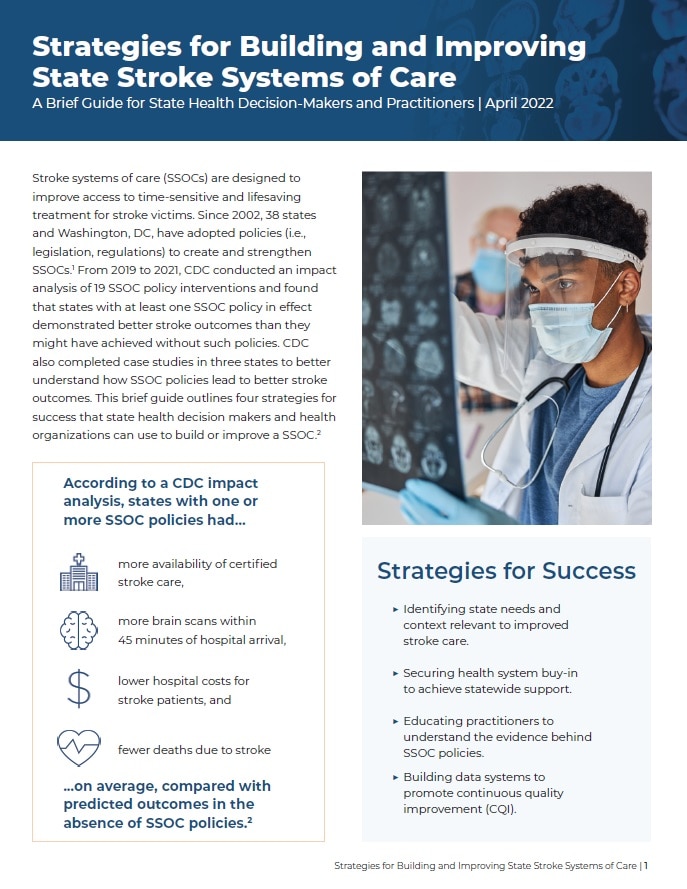At a glance
This page provides information about the evidence behind stroke systems of care and where evidence-informed policies regarding stroke have been adopted by states across the country.

Stroke policy
Stroke is a leading cause of death and disability in the United States. There are life-saving treatments for stroke, but patients must receive them in a timely manner.
Some states use laws to organize local health services into stroke systems of care—networks that help stroke victims receive appropriate treatment faster from the ambulance to the hospital to rehabilitation.
Stroke policy evidence assessment reports (PEARs)
State laws that address the policy interventions with best evidence are expected to have the greatest potential for a positive health impact and an associated economic impact.
Those with promising or emerging evidence could also have positive impacts, but the quantity and quality of the evidence for public health impact is limited at this time.
Impact of stroke systems of care policy interventions
State and local stroke systems of care (SSOC) are approaches for coordinating stroke-related activities and services to facilitate timely and effective care. SSOCs seek to address stroke patient care comprehensively and include efforts ranging from prevention, education, assessment, emergency transport, hospital care and treatment, and follow-up outpatient care.
In 2017, CDC's Division for Heart Disease and Stroke Prevention (DHDSP) reviewed and characterized the best available evidence for a range of SSOC policy interventions to improve stroke care. The review identified seven policy interventions to enhance pre-hospital stroke care and nine policy interventions to enhance in-hospital and post-hospital stroke care.
The CDC conducted an impact analysis study of 19 SSOC policy interventions and found that states with at least one SSOC policy in effect demonstrated better stroke outcomes than they would have achieved without such policies. Implementing or improving such interventions improves access to time-sensitive and life-saving treatment for stroke victims.
Evaluation findings brief

This brief, Assessing the Impact of State Stroke Systems of Care Policy Interventions [PDF – 236 KB], includes evaluation findings from an impact analysis of SSOC laws in all 50 states and Washington, DC, and case studies in a subset of three states that exceeded predicted performance on multiple stroke outcomes.
State decision-makers and public health organizations can use study findings to support and improve SSOC in states and regions.
Case study findings

This guide, Strategies for Building and Improving State Stroke Systems of Care: A Brief Guide for State Health Decision-Makers and Practitioners [PDF – 1 MB], summarizes key case study findings in three states where actual performance on stroke outcomes and reduced health disparities exceeded predicted performance.
It outlines four keys to success state health decision-makers and health organizations can use to build or improve a SSOC.
Related policy resources
Find related policy resources from CDC and other organizations.
Stroke prevention strategies
Other organizations
Shareable resources
These resources can help your audiences learn more about stroke. Share them with peers, advocates, educators, patients, and legislators.
- Social messages and graphics about stroke: Stroke Communications Kit
- CDC video about stroke: Recognize the Signs and Symptoms of Stroke
